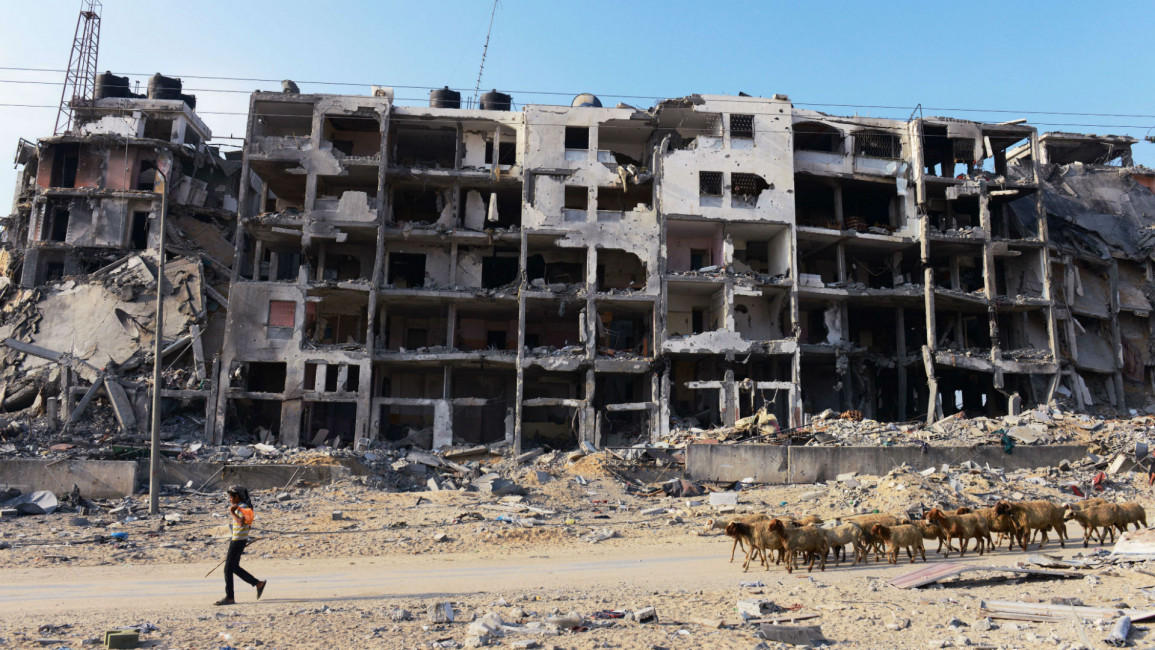
Explainer: Life in Gaza under Israel's blockade
On 30 March, tens of thousands of Palestinians, including women and children, gathered at sites throughout the Gaza Strip to take part in the 'Great Return March', calling for the right of return for Palestinian refugees who fled or were expelled during Israel's establishment in 1948.
Israeli forces positioned along the border opened fire on the demonstrations, killing 19 Palestinians and injuring hundreds. The massacre was the bloodiest single day in Gaza since Israel's 2014 military operation, which killed more than 2,200 Palestinians over 51 days of intense artillery fire, airstrikes, and a ground invasion.
While the right of return for the descendants of the 700,000 Palestinians expelled during the 1948 Nakba, or 'catastrophe', was central to the march, the tens of thousands of demonstrators were also protesting the crippling Israeli land, sea, and air blockade imposed on the coastal territory since 2007.
The blockade
Gaza is one of the most densely populated territories on the planet, with two million Palestinians crammed into just 362 square kilometres – and unable to leave.
Since 1967, the Gaza Strip has been occupied in much the same way the West Bank is today, with Israeli military bases and settlements littering the territory.
 |
Israel's blockade has had a dire impact on Gaza's economy. Unemployment in the besieged territory stands at 45 percent, one of the highest rates in the world. |  |
In 2005, Israeli Prime Minister Ariel Sharon unilaterally evacuated the Gaza Strip, removing all soldiers, settlements and around 10,000 settlers.
By the time of the withdrawal, Gaza was already fenced off from the outside world, having been subject to Israeli restrictions on movement since the early 1990's.
Israel intensified restrictions following Hamas's 2006 election victory and subsequent takeover of the territory from its rival Fatah movement, imposing a land, sea, and air blockade.
Since the ousting of Egypt's first democratically elected president Mohamed Morsi in 2013, the only entrance to Gaza not controlled by Israel, Rafah, has been almost completely closed by Cairo.
The United Nations calls Gaza occupied territory and says Israel is an occupying power. Both the UN and rights groups say the blockade amounts to "collective punishment".
Economic collapse
The blockade has had a dire impact on Gaza's economy. Unemployment in the besieged territory stands at 45 percent, one of the highest rates in the world.
Twitter Post
|
Youth unemployment in Gaza is particularly worrying at 58 percent, according to the World Bank, while two thirds of the population depend on humanitarian aid.
There is virtually no industry in Gaza due the blockade, with factories and key sectors such as construction forced to close down due to restrictions on the entry and exit of goods and materials.
Restrictive zones at sea have all but crippled what should be a thriving fishing industry, with Israeli attacks on fishermen and their boats routine.
In January 2018, the UN Middle East peace envoy Nickolay Mladenov warned that the Gaza Strip was on the verge of "full collapse".
Humanitarian disaster
The blockade has led to shortages of basic items such as food and fuel, leading to a humanitarian disaster.
Gazans have access to around four hours of electricity a day due to fuel shortages, while more than 90 percent of Gaza's water is unsafe to drink.
Around 47 percent of Gazans don't have enough food, according to Oxfam.
At least 10 percent of young children are stunted by chronic malnutrition, up to half of all medicines and medical items in Gaza are completely depleted or below one month's supply, and chronic electricity shortages have caused officials to cut health and other essential services.
War and destruction
Israel has launched three large-scale military operations in Gaza since 2008.
On 27 December, 2008 Israel launched a vast air offensive - "Operation Cast Lead" - in a bid to put an end to Palestinian rocket fire.
A ceasefire came into force on 18 January, 2009 to end the Israeli operation, in which 1,400 Palestinians and 13 Israelis were killed.
Beginning 14 November, 2012, Israel launched "Operation Pillar of Defence" with a missile strike that killed top Hamas commander Ahmed Jaabari. In the ensuring eight-day flare-up, 177 Palestinians and six Israelis were killed before an Egypt-brokered truce took effect.
On 8 July, 2014, Israel launched "Operation Protective Edge" against Gaza with the aim of ending rocket fire and destroying smuggling and militant tunnels dug from the enclave. The war left 2,251 dead on the Palestinian side and 74 on the Israeli side.
Over 100,000 homes were destroyed or damaged during the conflict, with thousands of other structures, including 24 schools, razed to the ground.
The Israeli-Egyptian blockade, internal Palestinian political rivalries, and massive donor funding shortfalls have impeded the reconstruction of Gaza, with large swathes still in ruins four years after the 2014 war.




